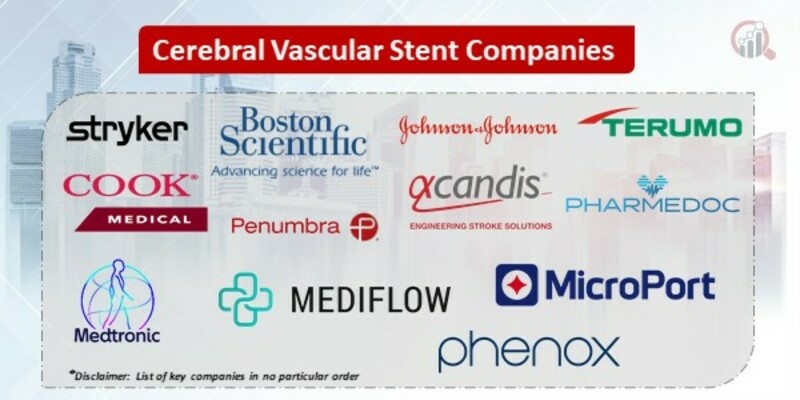Top Industry Leaders in the Cerebral Vascular Stent Market
 Latest Cerebral Vascular Stent Companies Update
Latest Cerebral Vascular Stent Companies Update
February 2023: Synchron, an organization specializing in neural interfaces, is currently in the process of creating state-of-the-art instruments with the aim of enhancing the quality of life for individuals who are paralyzed. Those who have no or extremely limited physical mobility can manipulate smart home devices and cursors with their consciousness using the Synchron Switch, which is subcutaneously implanted. Four individuals in Australia and three individuals in the United States have thus far been administered the experimental therapy. Synchron's BCIs are implanted through a minimally invasive approach that builds upon decades of research in endovascular procedures, in contrast to the open-brain surgery required by many of its competitors.
June 2023: Endologix LLC, a privately held multinational medical device corporation committed to developing innovative therapies for the interventional management of vascular disease, received approval from the U.S. Food and Drug Administration (FDA) today, June 2023. This approval is intended to assist Endologix LLC in its treatment of patients with complex peripheral arterial disease (PAD). While PTAB therapy signifies a notable advancement for patients afflicted with complex PAD, medical professionals have long been in search of a less invasive and more efficacious option to manage protracted lesions of the SFA. Endologix further enhances patient outcomes by capitalizing on its established track record of innovative vascular therapies through the implementation of the PTAB therapy. The DETOUR System signifies an advancement in the management of PAD, and the organization remains dedicated to prioritizing patients whose clinical requirements are most urgently unfulfilled.List of Cerebral Vascular Stent Key companies in the market
- Stryker Corporation (US)
- Boston Scientific Corporation (US)
- Johnson & Johnson Services, Inc. (US)
- Terumo Corporation (Japan)
- Cook Medical (US)
- Penumbra, Inc. (US)
- Medtronic plc (Ireland)
- Acandis GmbH (Germany)
- Phenox GmbH (Germany)
- MicroPort Scientific Corporation (China)

